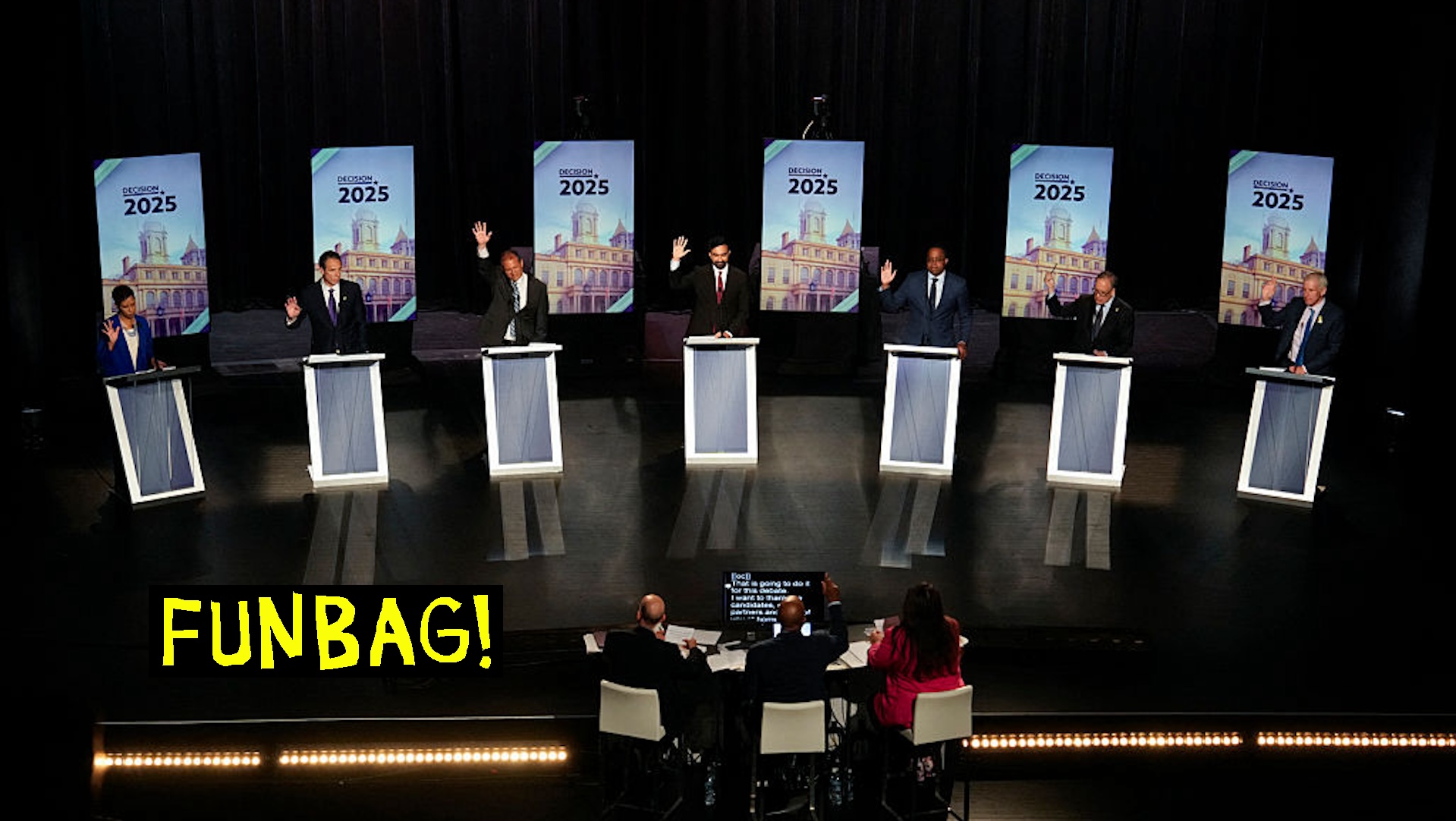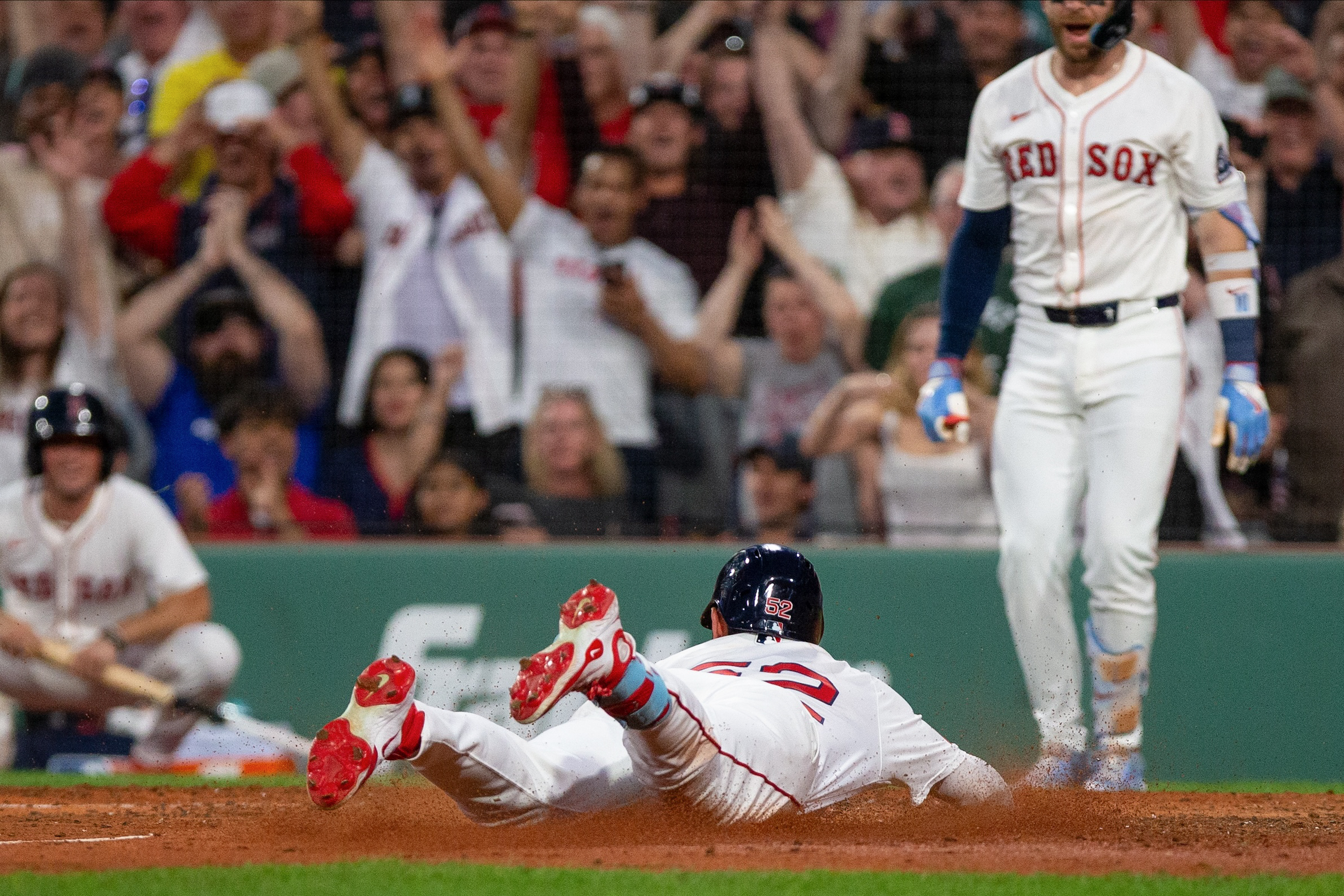OK, maybe I came in a little hot earlier this year, maybe it was like—you know when you are STARVING and then someone hands you something to eat and you think it’s the GREATEST thing on earth but it’s like … just a Mars bar? What kind of cultural starvation are we experiencing that I could walk out of Everything Everywhere All At Once and basically think "That was the greatest thing that ever happened"? I mean, it was GOOD, it was really good, maybe even great, but the conditions were ripe for me to think it was the BE ALL. Summer was on the horizon (before all the fucking floods and the searing heat and the million-dollar gas), the pandemic seemed to be receding (as if it ever really has), Tom Cruise was showing up at the cinema in a mask to tell us all it was okay to show up at the cinema in a mask—oh wait, that was two years ago. Jesus Christ. And the Daniels had made a film, like a proper film, one with a story they had come up with, a cast they chose, an absolutely glorious kaleidoscope of a movie—rather than a piece of intellectual property plucked out of a hat by an executive and built like a utility vehicle for consumers who would buy it because the studio had told them to and gave them no other options. This was the other option, and my extreme enthusiasm came not just from the film itself, but from the relief.
This season of summer movies was a junk-food buffet for the severely underfed. It wasn’t just the usual franchise tentpole stuff that brought people back to the cinema when the temperatures were up but actual movies—Hustle, Elvis, The Black Phone, Nope, Thirteen Lives, Bullet Train, Prey, Beast, Fall. As Vulture reported, this summer had almost half the theatrical releases of previous years, meaning far fewer massive blockbusters to compete with (there were basically five: Top Gun, the fourth Thor, the 9 millionth Jurassic Park, and the baby movies Lightyear and Minions), which at least in part explains the success of these “smaller” movies. Summer blockbusters never set the bar in the past, but in a landscape in which automated spectacle is churned out and little else is available or attended at the cinema, the grounded spectacle becomes the pinnacle. This is where the new enthusiasm is born, a kind of performative over-indulgence in the fact that over-sized quality can still exist.
What does that say about what we are missing?
The biggest movie of the year so far is Top Gun: Maverick, which came out two months after Everything Everywhere. OK, technically it’s a sequel. But it didn’t really play like one—at least it didn’t play like the tentpoles you usually see chucked off the assembly line of the big studios. That’s partly because the original is so old (1987, I was seven) meaning a huge swath of moviegoers don’t remember it. Rather than being a sweaty '80s flick starring a hot, young, not-yet-so-steeped-in-scientology Tom Cruise and a bunch of other oily variety bohunks in some kind of homoerotic dance of volleyball and homework, Maverick is an action movie led by a laser-focused now-sexagenarian who is the personification of enthusiasm. It co-stars a bunch of planes actually being flown by members of the navy with IMAX-quality cameras IN the cockpit (I have no idea how they did that but it sounds very dangerous). As Cruise said while still in the movie’s planning stages, “If we’re gonna make this, we’re gonna make it real. I want everybody in those planes, I wanna feel it.”
Top Gun: Maverick cost $170 million (half the budget of any superhero movie worth its salt) and made 10 times that at the box office. Critics were so lavish with their praise. “Tom Cruise is here to save cinema,” said Simran Hans, tongue firmly in cheek (I think?). I knew the film could never measure up. Even though it kind of did. I still prefer the original, despite its many flaws. In the follow-up, the romance seemed forced and disposable (not to mention the love scene playing as parody) and none of the student pilots were defined enough to grab onto, despite Glen Powell’s space-and-time-bending charisma—or maybe because of it. But fuck if those flying scenes weren’t actually better this time around. Fuck if everyone wasn’t willing to be just a little bit crazier. There didn’t seem to be any room here to criticize something that was so welcome under the present cinematic circumstances.
It’s like all these filmmakers, the ones who are not already hog-tied by various IP-driven projects, banded together to subtweet the system that wrecked the collective appetite for mortal theatrics: Want to watch a spectacle??? FINE!!! HERE IS SOME REAL SPECTACLE!!! A DIAMANTE-SPANGLED BAZ LURHMAN ELVIS BIOPIC!!! A GIANT BLOOD-PUKING CLOUD!!! A GIRL CHILD HUNTING A SPAGHETTI HAIRED ALIEN!!! WHATEVER RRR IS DOING!!! IDRIS ELBA IN HAND-TO-HAND COMBAT WITH A LION!!! TWO GIRLS STUCK AT THE TOP OF THE TALLEST, SPINDLIEST TOWER I HAVE EVER SEEN!!!
OK, maybe the last two slip into that space between theatrical and straight-to-video, but are they ever fun. They are the kind of diversion you can stretch out in (I saw Beast, the lion one starring Elba, in an empty theater so, literally), that don’t leave you feeling gross about the superhero mill or the questionable business practices of streaming services and mega-studios. As Elba said, “[Beast] isn’t designed to be complex. You go. You sit down. You eat your popcorn and, ‘Man, there’s a lion. Run. Run. Run.’”
Because Hollywood is such a cesspool, audiences have been gorging happily on these morsels of simple jubilation—even critics like me who hate capitalism can momentarily suspend their ire to cheer Everything Everywhere making four times its budget of $25 million for A24, because it means that for once this money is not going to the all-consuming mega-studio machine that’s taken over. Maybe that $100 million says there’s hope beyond the cinematic universe, hope even beyond these blockbusters for even more choices, kind of like we used to have.
In The Ringer in June, Alison Herman noted that the 40-year-old model for the summer blockbuster—“high-budget, higher-box-office spectaculars that could then become bankable franchises”—had slowly migrated to television. In the wake of streaming and Game of Thrones, summer movies now compete with comparably costly small-screen franchises like Stranger Things and Obi-Wan Kenobi. August saw She-Hulk: Attorney at Law, Thrones prequel House of the Dragon, and Lord of the Rings spin-off Rings of Power—the latter two I initially conflated because honestly how could you not. This may be blockbuster television, but the big shows aren’t like Maverick or Beast, they are those same superhero-fantasy movies, now available in our homes. Big money goes toward big CGI and big names, but there is little indication this is entertainment crafted by skilled people. “In my original pitch, it was an actual trial and it spanned multiple episodes,” She-Hulk’s lead writer Jessica Gao recently told Variety, before openly admitting, “none of us are that adept at writing, you know, rousing trial scenes.”
In mid-August, writer Mac Rogers went viral with the tweet: “I’m not saying they made better movies in the 90s, but I feel like they did a better job of making crappy movies in the 90s.” It made me think of The Lost City, which came out in March, versus its clear prototype, Romancing the Stone, which came out in 1984. They are basically the same movie—a romance writer ends up in an adventure straight out of one of her own books—with the same level of star power ( Kathleen Turner and Michael Douglas versus Sandra Bullock and Channing Tatum). So why does Lost City, despite its higher budget and despite filming on location, feel so small in scope, like it’s shot entirely on a soundstage, while Romancing feels so vibrantly cinematic despite the kitsch? Well, because Romancing was directed by Robert Zemeckis, who would go on to make Back to the Future. Its cinematography is by Dean Cundey (John Carpenter’s guy), and it is edited by the dudes behind Easy Rider and Duel. Lost City, meanwhile, was directed by the Nee brothers(?), with cinematography by Jonathan Sela (Deadpool 2), and edited by Craig Alpert (Toy Story 2).
I think of a movie like Ambulance, Michael Bay’s raucous heist thriller—the kind of movie that tricks you into earnestly saying the words HIGH OCTANE—starring Jake Gyllenhaal and Yahya Abdul-Mateen II as sibling bank robbers who hijack an ambulance, and even though I have always side-eyed Bay (not just for Transformers), he knows how stupid his action moves are and he knows how to make them. Bay used very little CGI here because, like Cruise, he wanted things to look real. Instead, he recruited a teenage drone enthusiast to give the film its vertiginous energy for what I imagine was a much lower price. It says something that a movie as doofily entertaining as Ambulance was hyped more by critics than audiences who didn’t really bother seeing it (it basically broke even on a $40 million budget—and Bay’s films are not known for breaking even).
The problem is that audiences have been trained to not only go to the theater to watch spectacles, but EPIC spectacles, and an emergency vehicle careening through Los Angeles crammed with hostages is just too grounded for a culture overrun by half-witted, scruffy-looking nerf herders. Ambulance was basically Speed, which had the same budget but grossed $350 million—it’s just that it’s not 1994 anymore. So even if you have the woman who edited Lawrence of Arabia editing your killer monkey movie (Congo, Anne V. Coates, 1995), even if you have the cinematographer who worked on Jaws working on your giant snake movie (Anaconda, Bill Butler, 1997), people still need to be convinced to go to the cinema to watch it.
But they clearly have an appetite for it—on social media, some people were even complaining Prey had not been given a theatrical release. I wonder how distracted audiences who haven’t been clamoring for more choice at the cinema are by superhero tentpoles and the streaming glut, how misinformed they have been by studios implying anything that isn’t disposable streaming or theatrical IP is exclusive and arty and not worth wasting time (or money) on. This is how you find overly enthusiastic critics pushing action-packed blockbusters. It’s not that these movies are so exceptional. It’s that the audience’s outsized enthusiasm for some of them suggests a yearning for an alternative to what entertainment mega-corporations have been prescribing for so long.
It’s become rote to say that in June 1975 Jaws introduced audiences to the summer blockbuster. But to make a splash you need something to swim against – at the time that was Nashville and Night Moves and Picnic at Hanging Rock. Which makes you wonder, had Star Wars arrived not in the summer of 1977 but two years before, alongside that shark movie, would anyone have noticed what was in the water?







